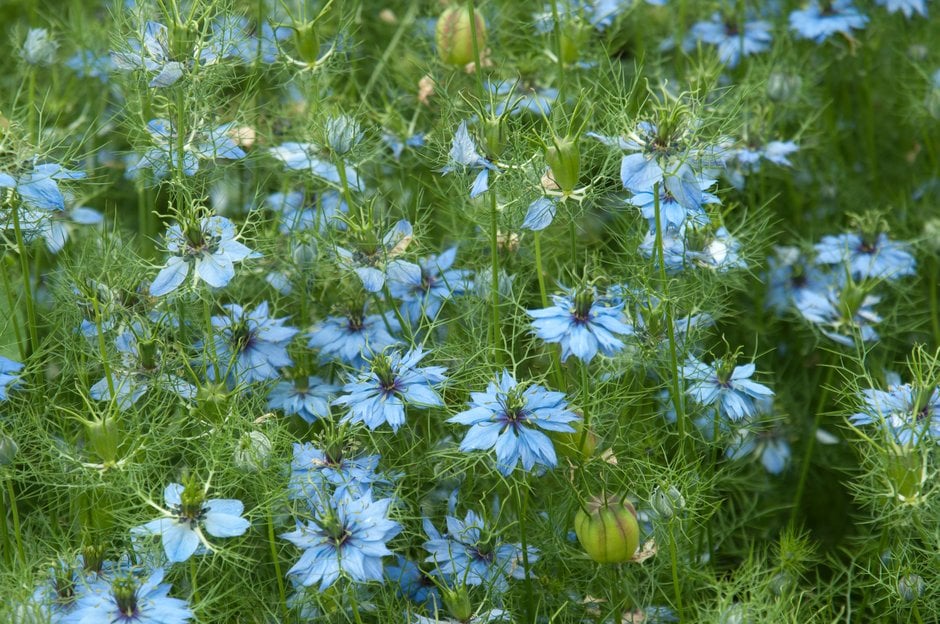Nigella damascena
love-in-a-mist
An upright, bushy annual to 50cm, with feathery bright green foliage. Saucer-shaped, pale blue flowers 4cm across with a ruff of foliage, finely divided at the tips, are borne in summer followed by decorative, inflated seed capsules
Other common names
bird's nestblue spiderflower
see morechase-the-devil
devil in the bush
garden fennel
Jack in prison
Jack in the green
Katherine's flower
kiss-me-twice-before-I-rise
lady in the bower
love-in-a-puzzle
love-in-a-tangle
St Catherine's flower
blue crown
devil in a bush
Size
Ultimate height
0.1–0.5 metresTime to ultimate height
1–2 yearsUltimate spread
0.1–0.5 metresGrowing conditions
Moisture
Well–drainedpH
Alkaline, NeutralColour & scent
| Stem | Flower | Foliage | Fruit | |
| Spring | Green | |||
|---|---|---|---|---|
| Summer | Blue | Green | Green | |
| Autumn | ||||
| Winter |
Position
- Full sun
Aspect
South–facing or West–facing
Exposure
Sheltered Hardiness
H3Botanical details
- Family
- Ranunculaceae
- Native to GB / Ireland
- No
- Foliage
- Deciduous
- Habit
- Bushy
- Genus
Nigella are upright, bushy annuals with finely dissected leaves and solitary flowers with 5 blue or white, petal-like sepals and feathery bracts, followed by ornamental seed pods
- Name status
Correct
- Plant range
- S Europe N Africa
How to grow
Cultivation
Grow in any well-drained soil in full sun
Propagation
Propagate by seed sown in situ in mid-spring or autumn. Autumn-sown plants may need the winter protection of a cold frame or cloche
Suggested planting locations and garden types
- Coastal
- Patio and container plants
- City and courtyard gardens
- Cottage and informal garden
- Wildlife gardens
- Wildflower meadow
- Flower borders and beds
Pruning
No pruning required
Pests
Generally pest-free
Diseases
Generally disease-free
Love gardening
Sign up to receive regular gardening tips, inspiration, offers and more
View our Privacy Policy
Get involved
The Royal Horticultural Society is the UK’s leading gardening charity. We aim to enrich everyone’s life through plants, and make the UK a greener and more beautiful place.
